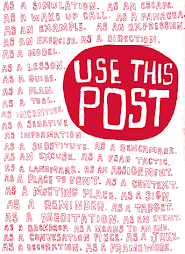Before:
content was fixed,
access/process/connectivity was variable.
content was fixed,
access/process/connectivity was variable.
Today:
access/process/connectivity is fixed,
content is variable.
access/process/connectivity is fixed,
content is variable.
a standard access:
want students to learn more?
make sure that each student has open source access
1) free and big enough bandwidth
and filters that model real life If we really want our students safe, ethical and efficient, we should allow full web access while they are under the best supervision, from their teachers, their peers, and from volunteers. This may sound daunting and even unacceptable at the elementary level. Human filters are better than machine filters. Volunteers that are extra eyes in your classroom to teach kids the power of the back arrow, how to block a follower, and how to check the reliability of a source. A school's success in this area could be determined by the ability of each student to safely access authentic data, present to authentic audiences, and self-regulate appropriate web ethics. At least by the end of a 4 year implementation, this should all be visible via each student's digital footprint. (Schools that truly have no means of effective volunteers would set up some machine based filter system and be rated according to their demographics.
2) natural tool of choice
no more bulk purchase Each library, and each classroom, should have a spattering of tech tools for use. In life, people select a tool by it's usefulness to the need at hand and also by personal preference. If we want students to not only have open access, but to have comfort with that access, we need to provide tools they are more likely to encounter throughout their futures. A school's success could be determined by the availability of several types of tools that access info and people on the web
and filters that model real life If we really want our students safe, ethical and efficient, we should allow full web access while they are under the best supervision, from their teachers, their peers, and from volunteers. This may sound daunting and even unacceptable at the elementary level. Human filters are better than machine filters. Volunteers that are extra eyes in your classroom to teach kids the power of the back arrow, how to block a follower, and how to check the reliability of a source. A school's success in this area could be determined by the ability of each student to safely access authentic data, present to authentic audiences, and self-regulate appropriate web ethics. At least by the end of a 4 year implementation, this should all be visible via each student's digital footprint. (Schools that truly have no means of effective volunteers would set up some machine based filter system and be rated according to their demographics.
2) natural tool of choice
no more bulk purchase Each library, and each classroom, should have a spattering of tech tools for use. In life, people select a tool by it's usefulness to the need at hand and also by personal preference. If we want students to not only have open access, but to have comfort with that access, we need to provide tools they are more likely to encounter throughout their futures. A school's success could be determined by the availability of several types of tools that access info and people on the web
3) library as hub One easy way to provide access to every student is to change each school library, if you haven't already, from a noun to a verb. The library should be the hub of the school, where students, especially ones with none at home, have access to the web along with every tool they might need/want to research, organize, communicate, collaborate, and create. Size of the library, staffing for the library, and seat time in the classroom, would all have to be adjusted to meet ongoing needs. A school's success could be determined by student's access with computers and cameras and cell phones, etc.
__________________________
the short version of access (1 of 3 things that should be standard at each school):
access:
1. free wifi (human filters where needed)
2. natural tools a kid will be using to access the web
3. time and space to use these tools at/during school - (library as hub) especially for kids who don't have tools/access at home____________________________________________________________





































